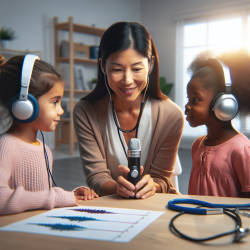As educators and therapists, our primary goal is to ensure that all children, regardless of their abilities, have the means to express themselves and interact meaningfully with the world around them. This is particularly crucial for children who rely on augmentative and alternative communication (AAC) systems. The research presented in PACT: Partners in Augmentative Communication Training. A Resource Guide for Interaction Facilitation Training for Children offers valuable insights into enhancing interaction skills for children with AAC needs.
The PACT model emphasizes the importance of a collaborative approach between children using AAC systems and their communication partners. This approach is grounded in the understanding that communication is a two-way street, and for children with AAC needs, the quality of interaction can significantly improve with the right training and support for both parties involved.
Here are some strategies derived from the PACT model that practitioners can implement to improve their skills and encourage further research:
- Focus on Interaction, Not Just Technology: While selecting the right AAC device is crucial, equal emphasis should be placed on how these tools are used to facilitate interaction. Training should include strategies for both the child and their communication partners to initiate and sustain conversations.
- Implement Role-Playing and Simulation: Use role-playing exercises to simulate real-life scenarios where the child and their partners can practice various communication strategies. This hands-on approach helps in solidifying the skills needed for effective communication.
- Encourage a Multimodal Communication Approach: Encourage children and their partners to use a combination of communication modes, including gestures, facial expressions, and body language, alongside AAC devices. This holistic approach to communication can enhance understanding and expression.
- Provide Feedback and Positive Reinforcement: Constructive feedback and positive reinforcement can significantly boost the confidence of AAC users and their partners. Celebrate successes, no matter how small, to motivate continued effort and improvement.
- Involve Peers in Training: Including peers in interaction facilitation training can foster a more inclusive environment. Peer involvement can also provide children with AAC needs more opportunities to practice their communication skills in a naturalistic setting.
- Customize Training to Individual Needs: Recognize that each child has unique communication needs and preferences. Tailor your training approaches to fit these individual needs, considering factors such as the child's interests, communication goals, and the contexts in which they communicate.
Implementing the outcomes of the PACT research can lead to more meaningful interactions for children with AAC needs, empowering them to participate more fully in their social, educational, and personal lives. For practitioners, this approach not only enhances their skill set but also contributes to a more inclusive and communicative environment.
For those interested in delving deeper into the research and methodologies outlined in the PACT model, further exploration and study are encouraged. The original research paper provides a comprehensive guide and a wealth of resources for improving interaction facilitation training for children with AAC needs.
To read the original research paper, please follow this link: PACT: Partners in Augmentative Communication Training. A Resource Guide for Interaction Facilitation Training for Children.










